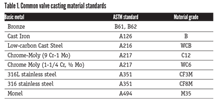NAM Monday Economic Report – February 2, 2015
The U.S. economy grew 2.4 percent in 2014, just barely edging out the 2.2 percent gain in 2013.
These international concerns have caught the attention of the Federal Reserve Board. The Federal Open Market Committee (FOMC) sees risks from the global economy, and it will continue to watch how the stronger dollar and reduced energy prices impact the overall macroeconomy. At the same time, the Federal Reserve stated that “economic activity has been expanding at a solid pace,” with notable improvements in the labor market and with pricing pressures easing. On the issue of when the Federal Reserve will start to raise short-term interest rates, the FOMC statement said that “it can be patient in beginning to normalize the stance of monetary policy.” This was widely interpreted as suggesting that the Federal Reserve will keep short-term rates at current levels at least until June, with conventional wisdom holding that it will begin to normalize rates at some point in 2015.
One thing that might be on the minds of the FOMC participants—particularly in their emphasis for patience—could be weaker-than-expected activity from manufacturers in recent reports. New durable goods orders, for instance, fell 3.4 percent in December, ending the year on a weak note. Orders for durable goods declined in four of the past five months. As such, manufacturing activity in the second half of 2014 was less than desired, providing a bit of a contrast with better demand and sentiment data elsewhere. Looking at regional surveys, the Richmond Federal Reserve Bank said that manufacturers in its district continue to expand modestly, albeit with some easing from prior months. Its respondents also remain mostly upbeat about the next six months. In contrast, lower petroleum prices have dampened demand and the overall outlook for manufacturers in Texas, according to the Dallas Federal Reserve Bank’s survey.
Meanwhile, consumers are more confident, with lower gasoline prices and better economic news likely influencing the increase in perceptions. The Conference Board’s measure of confidence reached its highest level in January since August 2007, just a few months before the start of the recession. Likewise, sentiment from the University of Michigan and Thomson Reuters rose to levels not seen since January 2004. These multiyear highs indicate that Americans improved their assessments on the economy, starting the new year with a feeling of optimism. However, the Conference Board report found that this did not necessarily translate into increased buying intentions—at least not yet. Nonetheless, the strong consumer spending numbers in the real GDP data discussed above might suggest the opposite.
This morning, we will get the latest read on manufacturing activity from the Institute for Supply Management, with factory orders and shipments data from the Census Bureau coming out tomorrow. On Thursday, the December international trade report will come out, giving us our first look at manufacturing exports and imports for 2014 as a whole. On Friday, we will see if jobs numbers from the Bureau of Labor Statistics will continue to show an improving labor market. Other economic highlights include updates on ADP employment numbers, construction spending, labor productivity and personal income and spending.
Chad Moutray is the chief economist, National Association of Manufacturers.
RELATED CONTENT
-
Editor's Product Picks
Neles introduces valve-sizing and selection software for all intelligent automated process valves.
-
The Biggest Valves: Sizes Growing in Step with Greater Demand
Valve manufacturers that have the expertise, skills, equipment and facilities to produce large valves are rare.
-
Which Gate Valve is Best for Today's Waterworks Systems?
A historical perspective may provide the answer.








 Unloading large gate valve.jpg;maxWidth=214)

